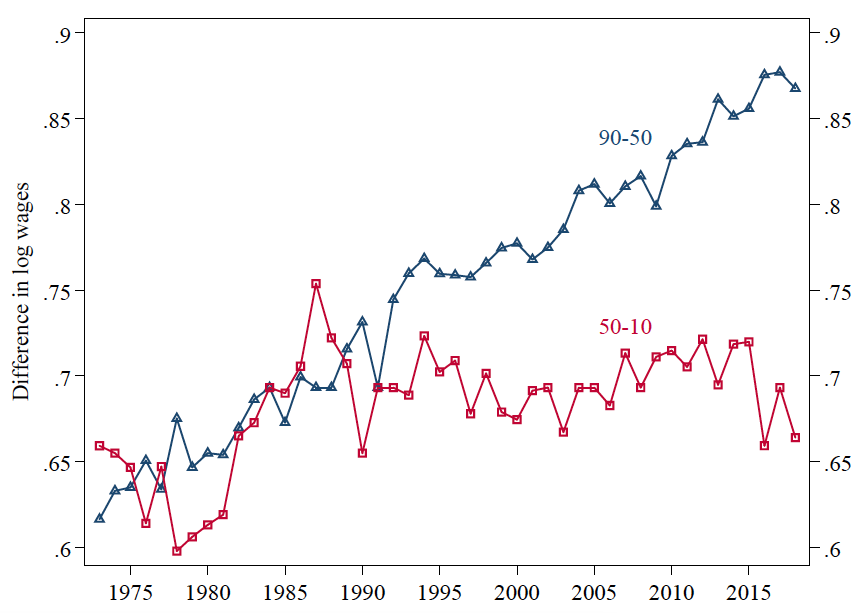Thursday, October 17, 2019
The link between declining middle-wage jobs, rising wage inequality, and worker welfare
From VOX post by Jennifer Hunt and Ryan Nunn:
“Over the last five decades, middle-wage jobs diminished in the US as wage inequality increased. This column investigates the relationship between these two phenomena, and finds no evidence that either computerisation or automation (often cited as a source of both trends) produced employment polarisation or increased wage inequality. By examining wages at the individual level (rather than occupation-average wages), the column suggests that the evolution of wages can be better explained by distinct causes—ranging from changing labour market institutions to globalisation—than by observable demographic factors.
Middle-wage jobs in the US are gradually diminishing while wage inequality has been rising. But are the two related? Does the decline in middle-wage jobs represent polarisation of employment, and is the decline a good or a bad thing for workers?
Inequality between top and middle hourly wages has increased steadily for the last 50 years in the US. By contrast, inequality between middle and bottom wages rose sharply in the 1980s; then, after a slight decline, it remained stable for the next 30 years. These gaps are commonly measured as the ratio of the 90th and 50th percentile wages (the wage of the worker earning more than 90% of workers relative to the wage of the worker earning more than 50% of workers) and the ratio of the 50th and 10th percentile wages, as shown in Figure 1.
Note: Difference between 90th and median log hourly wages (90-50) and median and 10th percentile wages (50-10), weighted by weekly hours work. Non-self employed workers 18-64 without missing values for covariates used elsewhere in the paper, but including imputed values.
Source: CPS MORGs 1979-2018 and CPS Mays 1973-1979.Economists have investigated many potential explanations for these changes, including the decline of unions (Fortin et al. 2019); the inflation-adjusted minimum wage (Lee 1999); the spread of outsourcing and temporary-agency labour (Feenstra and Hanson 1999); reduced competition and dynamism (Furman and Orszag 2018, Shambaugh et al. 2018); and increased international trade, off-shoring, and technological progress (Blum 2008, Feenstra and Hanson 2003). The first two factors played an important role in the 1980s, and many researchers believe that technology has played an important role throughout.
A complementary analysis focuses on employment shares of low-, middle-, and high-wage workers rather than wage inequality. One of the most striking findings from this work is that the share of middle-wage jobs has declined. This decline can be measured in different ways, one of which is to examine shifts in the occupational composition of employment. Some research foregrounds the role of technology in its examination of these shifts, because in addition to a decline in the employment share of middle-wage occupations and a rise in employment share of high-wage occupations, the share of low-wage occupation employment share has been rising (e.g. Autor 2015a,b and Autor and Dorn 2013 for the US; Goos et al. 2009 and Goos et al. 2014 for other countries).”
Continue reading here.
Posted by at 9:18 AM
Labels: Inclusive Growth
Subscribe to: Posts
